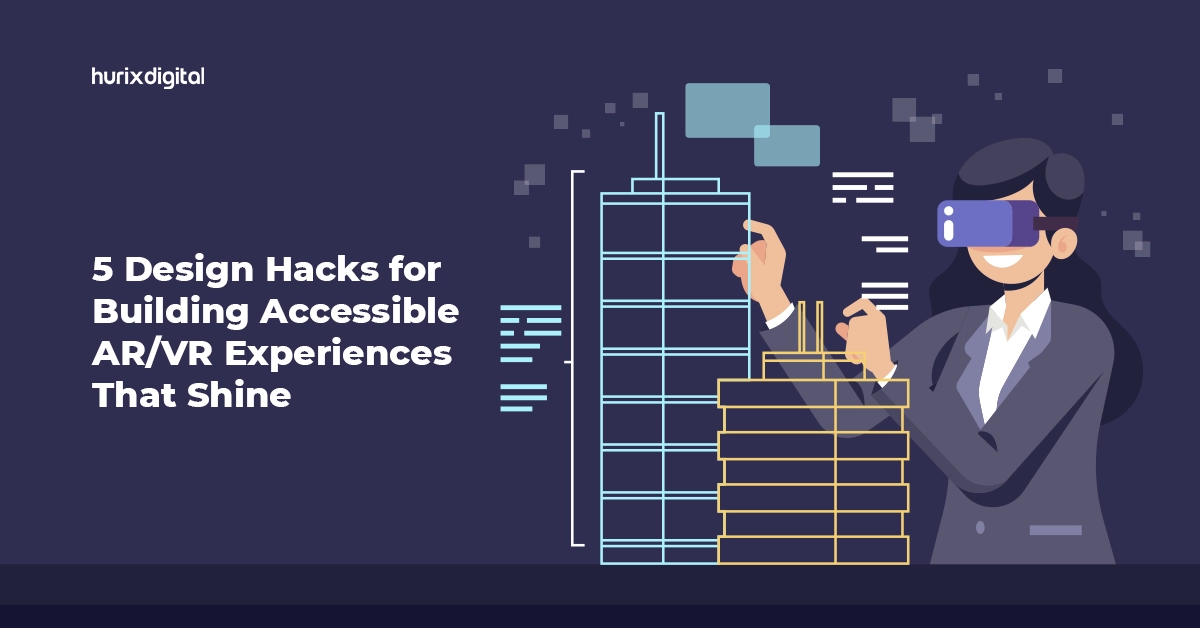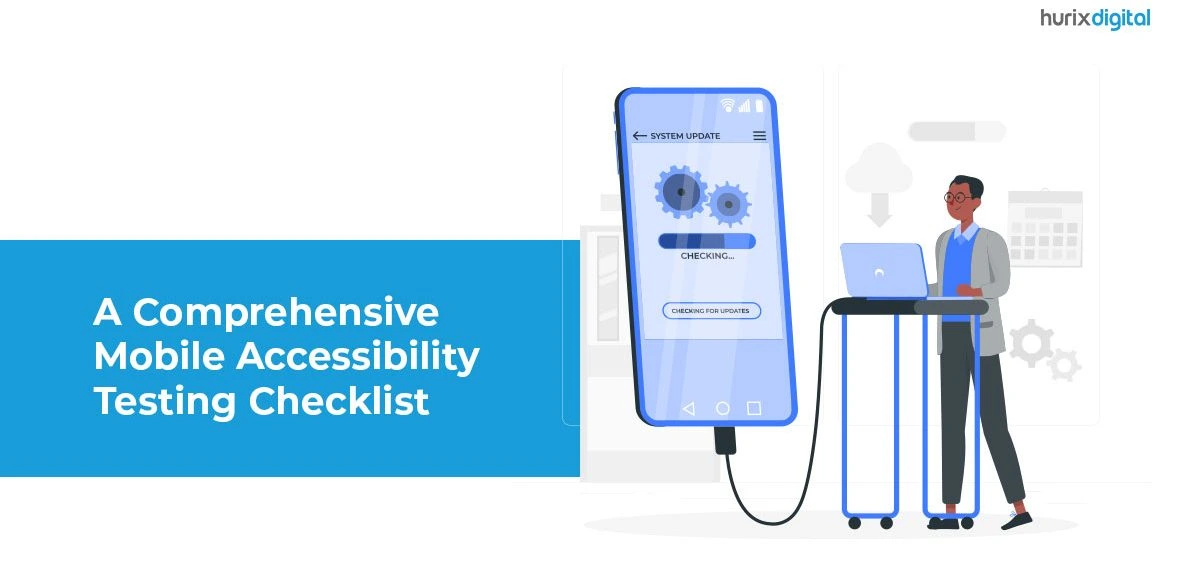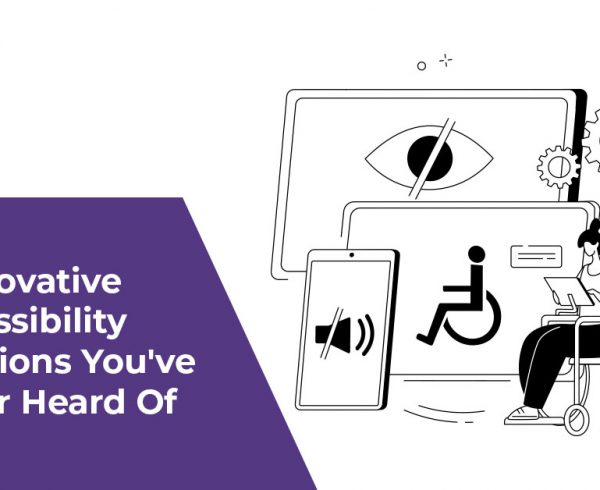Summary
Craft immersive AR/VR experiences with accessibility in mind using five key design hacks. Prioritize user experience by incorporating features like intuitive navigation, text-to-speech options, and color contrast enhancements. By implementing these hacks, developers ensure their creations are inclusive and shine for all users, regardless of ability.
Virtual reality (VR) and augmented reality (AR) are revolutionizing how we interact with the world around us. Virtual reality constructs cohesive simulated environments leveraging computer-generated graphics, enabling users to engage in activities such as virtual tourism, digitally-rendered mountaineering, and others.
AR, on the other hand, overlays digital elements in the real world, like viewing hidden historical landmarks or visualizing furniture placement in your home.
While the potential of AR/VR generates considerable excitement, prioritizing accessibility in immersive experiences is paramount. Through its ability to surmount physical and financial limitations, accessible AR/VR design transcends traditional access barriers, turning exclusive events and remote destinations into inclusive experiences for everyone.
Donning a headset becomes a transformative act, unlocking a universe of exploration and connection previously inaccessible to individuals of varying capacities, financial limitations, and time constraints.
Table of Contents:
- What is the AR/VR potential in 2024?
- Five Hacks for Promoting Inclusive AR and VR Environments
1. Visual Impairments
2. Effective Closed Captioning Design
3. Movement Mechanics
4. Hands-free Interaction
5. Accessible Menus - The Bottom Line
What is the AR/VR potential in 2024?
Grand View Research predicts the consumer VR market, valued at $15.81 billion presently, will nearly quadruple in size to reach $50.3 billion by 2028, driven by rising adoption in gaming, entertainment, and training applications.
Through meticulous focus on accessibility, AR/VR design innovation can evolve from a captivating entertainment medium to a transformative tool for enhancing the lives of individuals with disabilities.
The prospect of overcoming real-world limitations within an inclusive virtual reality, such as a wheelchair user reaching a virtual mountaintop or an individual regaining virtual mobility, presents a compelling argument for prioritizing accessibility in immersive experiences.
By incorporating accessibility features early in development, we can create products that resonate with everyone, maximize positive experiences, and avoid costly retrofits.
This article explores AR/VR accessibility hacks for promoting inclusive virtual reality and augmented reality environments.
Five Hacks for Promoting Inclusive AR and VR Environments
1. Visual Impairments
AR/VR design innovation holds immense potential, but neglecting accessibility in immersive experiences creates barriers for individuals with visual impairments. As designers, we are responsible for ensuring user-centered virtual experiences, and addressing color blindness is a crucial step in this direction.
Your AR/VR experience can embrace diverse vision abilities with a few mindful considerations.
- Shape and Pattern Variations: Employ distinct shapes and patterns to differentiate interactive elements, especially when presenting multiple options.
- High Contrast Palettes: Utilize starkly contrasting shades like dark backgrounds versus light foregrounds to enhance legibility and visual separation.
- Descriptive Text Labels: Accompany visual cues with clearly written text labels to reinforce understanding and provide redundancy for users relying on audio.
- Customizable Color Spectrums: Implement a comprehensive color customization system in your AR/VR design innovation. Users may adjust contrast, brightness, and saturation to their preferences, mitigating color blindness limitations.
- Built-in Colorblindness Presets Offer pre-configured color schemes tailored to the three most common forms of color blindness: protanopia, deuteranopia, and tritanopia.
- Text Size Hierarchy: Employ varying text sizes to differentiate the importance of information. Enlarge crucial cues and instructions for easy identification.
- Harnessing Sound for Navigation: Leverage spatial audio cues and sound effects to guide users through the VR environment, assisting with object location and distance perception. This provides an alternative navigation channel for those with visual limitations.
- Customizable Audio Options: Provide comprehensive audio customization settings, allowing users to adjust volume, audio mix, and spatialization based on their specific needs and equipment. It ensures optimal audio experiences for those with hearing impairments or varying ambient noise environments.
2. Effective Closed Captioning Design
Among other accessible AR/VR design elements, closed captioning (CC) is imperative in ensuring inclusion for individuals with hearing impairments.
- Strategic Positioning: Drawing inspiration from established CC guidelines, ensure captions are positioned within the user’s natural field of view, avoiding overlap with essential visual elements.
- Customization Tools: Empower users to adjust font size and brightness based on their needs and preferences.
- Preset Options: Streamline the setup process by offering pre-built presets for general accessibility requirements. These could include:
- Site Aesthetic Preset: Aligning CC font and style with the overall UI design.
- Sans-serif Preset: Prioritizing clear, easily readable fonts for optimal visual processing.
- Dyslexia-friendly Preset: Implementing fonts and spacing tailored to mitigate reading difficulties.
- Facilitating Spatial Audio Awareness: When CC originates from a specific source within the AR/VR environment, integrate an arrow or visual cue guiding users toward the sound’s origin. It enhances spatial awareness and comprehension for augmented reality accessibility.
Also Read: How Can Your Business Comply with WCAG 2.2 Seamlessly?
3. Movement Mechanics
Addressing mobility considerations through thoughtful design choices is crucial to creating an inclusive virtual reality that caters to diverse abilities.
- Tailoring Movement to Accessibility: VR experiences employ varying degrees of freedom (DoF) for user movement. While head-based orientation (3 DoF) offers a convenient baseline, inclusivity dictates exploring alternatives. For users with physical limitations, consider:
- Single-button Navigation: Implement a single-button press on the controller to trigger both world rotation (3 DoF) and free movement (6 DoF), reducing reliance on physical motion.
- Voice Commands: Integrate voice control functions for movement and interaction, empowering users with limited hand mobility to navigate and engage with the AR/VR world.
- Audio Cues: Employ distinct sound effects or subtle changes in background music to signal the onset of crucial scenes, prompting users to refocus their attention.
- Visual Indicators: Introduce temporary visual highlights or subtle shifts in lighting to draw attention to vital moments within the AR/VR environment.
- Object interaction: Presents another hurdle in accessible AR/VR design. Ensure inclusivity by implementing:
- Haptic Feedback: Utilize subtle haptics in the controller upon hovering near objects to provide feedback without requiring physical contact.
- Remote Activation: Allow object selection and manipulation from a distance, minimizing reliance on reaching or precise physical movements.
4. Hands-free Interaction
For users with motor impairments, traditional controllers can pose significant barriers. Gesture recognition is a liberating alternative, enabling direct hand and limb movements to control the virtual world.
Imagine a wheelchair user soaring through a fantastical landscape, their outstretched arm guiding their flight, or someone with limited hand dexterity manipulating objects effortlessly via subtle finger gestures.
- Enhanced Navigation and Engagement: Gesture recognition surpasses basic movement controls. This AR/VR design innovation deepens engagement and immerses users further in the virtual world, fostering a sense of agency and control.
- Customizable Options: The beauty of gesture recognition lies in its adaptability. Developers can design gesture sets that allow user-centered virtual experiences. An individual with visual impairments might utilize hand swipes to switch menus, while another user could navigate a challenging AR/VR game through personalized arm movements.
5. Accessible Menus
AR/VR menus hold the key to unlocking virtual worlds, but designing them with only a select few in mind can slam shut the door on accessibility.
- Voice Control: Let users speak their commands, eliminating the need for physical ability.
- Joystick Mastery: Cater to traditional controller users with intuitive joystick navigation, allowing familiar movements to translate seamlessly into the VR realm. Enable scrolling through options, precise selection with button presses, and shortcuts for seasoned explorers.
- Eye-tracking Vision: For those seeking a futuristic experience, offer eye-tracking control. Gaze upon menu items to select them, follow light trails to desired destinations, or even unlock advanced functions through direct visual focus. It empowers users with limited hand mobility to navigate with precision and grace.
- Keyboard Compatibility: Remember the power of the familiar. Keyboard accessibility ensures those with motor limitations or specific preferences can utilize their existing skills. Let fingers fly across keys to navigate menus, type text commands, and personalize their AR/VR experience.
Also Read: Accessibility for Masses – Know How Hurix Digital Comes in
The Bottom Line
By embracing this technology and prioritizing accessible AR/VR design from the outset, developers can open the doors to an inclusive virtual reality world for everyone, regardless of physical limitations.
Whether it is product visualizations that redefine customer engagement or training simulations that boost employee efficiency, Hurix Digital’s accessible AR/VR design drives exceptional business results. We constantly explore emerging AR/VR design innovations and trends, ensuring your business is always at the forefront of the immersive revolution.











